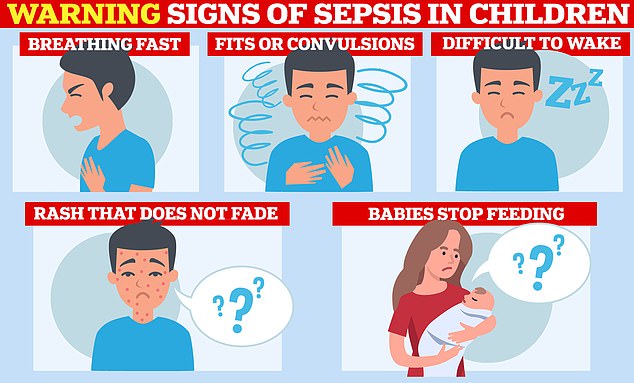New ‘game changer’ sepsis test could shorten the time it takes to get patients the best possible treatment
A new life-saving test could dramatically shorten treatment times for potentially deadly sepsis by quickly pinpointing the exact bacteria causing the condition.
Currently, it can take days for doctors to definitively determine which bacteria is causing sepsis, the immune system’s violent response to an infection.
This means that doctors must use a wide range of medications that are specifically designed to fight a large number of pathogens. However, these medications may be less effective than specific medications.
But a new test, conducted by scientists in South Korea, shortens this labor-intensive process to 12 hours.
This eliminates the need for microbiologists to meticulously culture samples from sick patients in Petri dishes to determine the cause of their illness.
The new test, tested by scientists in South Korea, shortens the laborious process to 12 hours. It bypasses the need for microbiologists to painstakingly grow samples from sick patients in petri dishes to figure out exactly what’s behind their illness.

Former MP Craig Mackinlay, 57, received a warm welcome when he returned to parliament in May after losing his hands and feet to sepsis last September

Sepsis is life-threatening, but if caught early, it is treatable. Children with sepsis may have difficulty breathing, convulsions, be lethargic, have a rash that does not go away when you put a glass on it, and babies may have trouble feeding
Instead, the advanced test can determine which microorganisms are the culprit by looking at the genetic information hidden in a sample.
Dr. Kim Tae-hyun, co-author of the study and an expert in quantum computing at Seoul National University, said the technology has the potential to be a “game changer,” The times reported.
Co-author Professor Kwon Sunghoon, an expert in computer engineering, added: ‘Sepsis affects more than 40 million people worldwide each year, with a mortality rate ranging from 20 to 50 percent.
‘This high mortality rate results in more than 10 million deaths annually. Therefore, accurate and rapid prescription of antibiotics is essential for treatment.
‘The long lead time of current testing methods directly contributes to the rapid development of antibiotic-resistant bacteria.’
Using the new technique, researchers isolated pathogens in a patient’s blood sample without first having to culture the blood sample.
Using special peptide molecules – the building blocks of proteins – scientists attached them to magnetic nanoparticles.
When the peptides are added to the blood sample, they bind to the harmful bacterial cells.
The pathogens are then removed using magnetism, after which doctors analyze the DNA extracted from the bacteria to determine exactly which microbes are involved.
AI is also used to analyze their growth patterns and predict which treatments will be most effective for the patient.
Writing in the diary NatureAccording to the scientists, this technique could shorten current testing methods by 30 to 40 hours and they hope the technique could be available for use in patients within two to three years.
Importantly, the entire process can be carried out by one machine, they added.
Sepsis, also known as the ‘silent killer’ because it is so difficult to recognise, claims almost 50,000 lives in the UK each year.
This condition occurs when the body’s immune system becomes overloaded in response to an infection, triggering a series of reactions that can lead to fatal organ failure.
Suspected patients should receive antibiotics within one hour of arriving at the hospital.
Bacterial infections are usually the cause of sepsis, but viruses such as Covid and influenza (which antibiotics do not work against) can also cause the condition.
The UK Sepsis Trust estimates that the risk of dying from sepsis increases by 1 to 2 percent for every hour of delay in diagnosis.
But even the aftermath that survivors experience can change their lives.
Former MP Craig Mackinlay, 57, received a warm welcome when he returned to parliament in May after losing his hands and feet last September after contracting sepsis.
He also suffered tissue damage to his gums, which has caused him to have loose teeth. His ears and face were also damaged.
